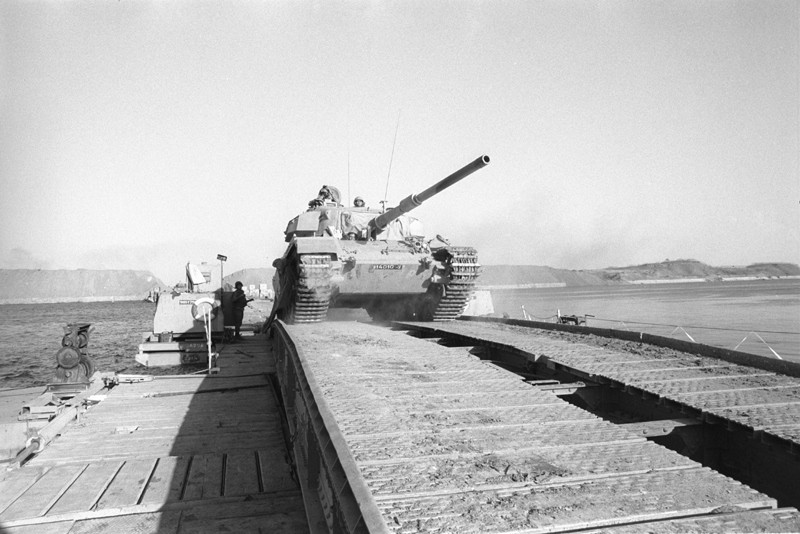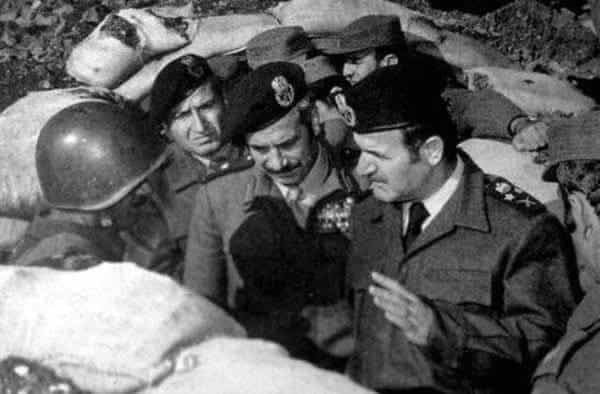In October 1973, the Middle East was again engulfed in a devastating conflict that would become known as the Yom Kippur War. Fought between Israel and a coalition of Arab states led by Egypt and Syria, this war marked a significant turning point in the regional power dynamics and had far-reaching consequences for the parties involved.

IDF Spokesperson’s Unit
Yom Kippur War: Historical Background
Before the Yom Kippur War, tensions had been simmering in the region since the Six-Day War of 1967. Arab states, humiliated by their defeat, sought to regain lost territories, while Israel continued to consolidate its control over the occupied territories. Against this backdrop, the stage was set for a new chapter of conflict.
Yom Kippur War Main Actors
The primary participants in the Yom Kippur War were Israel, Egypt, and Syria. However, other Arab nations, including Jordan, Iraq, and Saudi Arabia, provided varying degrees of support to the coalition against Israel.
The course of the Conflict:
- Surprise Attack: On October 6, 1973, the holiest day in the Jewish calendar, Egypt and Syria launched a coordinated surprise attack on Israeli positions in the Sinai Peninsula and the Golan Heights. The timing of the assault, during the Yom Kippur holiday, caught the Israeli Defense Forces (IDF) off-guard. On the other hand, everyone was at home, so locating them quickly was easy.
- Arab Advances: The initial Arab offensives made significant gains, pushing Israeli forces back and raising the morale of the Arab coalition. Egyptian forces crossed the Suez Canal and established bridgeheads in the Sinai, while Syrian forces advanced into the Golan Heights.
- Israeli Counteroffensive: Despite initial setbacks, Israel rallied its forces fast and launched a determined counteroffensive. Utilizing their superior air power and military expertise, the IDF managed to turn the tide of the war.
- Diplomatic Interventions: International pressure, particularly from the United States and the Soviet Union, played a crucial role in bringing about a ceasefire and halting the conflict.
The Battle of the Valley of Tears

Aftermath and Impact:
- Strategic Realignments: The Yom Kippur War had significant implications for regional power dynamics. The conflict led to a reshaping of alliances, with Egypt becoming an important player in the peace process while Syria continued its pursuit of regaining the Golan Heights.
- Oil Crisis: The war triggered an oil embargo imposed by Arab oil-producing nations against countries supporting Israel, leading to a global energy crisis and significant economic repercussions.

- Peace Process: The conflict laid the foundation for future peace negotiations. The Camp David Accords in 1978 between Egypt and Israel resulted in the return of the Sinai Peninsula to Egypt and established a framework for diplomatic relations between the two countries.
- Lessons Learned: The Yom Kippur War served as a wake-up call for Israel, highlighting the vulnerabilities and complacency that had developed since the Six-Day War. It spurred a reassessment of military strategies, intelligence capabilities, and preparedness for future conflicts.
Conclusion:
The Yom Kippur War was a watershed moment in Middle Eastern history. It demonstrated the resilience and military capabilities of Arab forces while forcing Israel to reevaluate its security and diplomatic approach. The conflict resulted in significant geopolitical shifts and energy crises and eventually paved the way for peace negotiations between Israel and its Arab neighbors. Understanding the complexities and legacies of the Yom Kippur War is crucial to comprehending the ongoing challenges and aspirations for peace in the region.

